Liz Dampsey, PhD, SEP
By Liz Dampsey, PhD, SEP
Clinical Psychology Postdoctoral Fellowship Program
The field of equine-assisted psychotherapy (EAP) has seen rapid growth over the last decade. Research in the field has been increasing substantially in terms of qualitative and quantitative studies that point to its therapeutic efficacy. Evidence suggests that EAP can improve self-awareness, self-efficacy (the belief in one’s own abilities to achieve goals and influence outcomes), and emotion regulation, while decreasing depression, anxiety, negative affect, and maladaptive behaviors.
The potential for experiencing these benefits is directly related to the inherent nature of horses, which involves their biological makeup. Their prey nature makes them highly attuned to their environment in order to ensure their safety, which is what makes them intuitive and emotionally sensitive to the slightest gesture, body posture or tension, tone of voice, or glance that we humans may unknowingly communicate. They respond to our non-verbal behaviors and feelings through their body language, which can be subtle (i.e., the direction of their ears, overall muscle tone, licking of their lips) or quite overt (i.e., walking away from an approaching human). They have the potential to teach us how we impact those around us.
The size and power of horses require a certain level of attentiveness in the moment to safety, which increases awareness of oneself and the environment. Their size can trigger fear and an opportunity to overcome that fear, while increasing self-confidence and self-efficacy through the successful completion of horse-handling tasks. The issue of boundaries also arises when dealing with the horse’s size and power. Horses have clear boundaries, which they assert freely with each other and with us. Learning to attune to a horse’s subtle and sometimes not so subtle boundary cues has the potential to further increase awareness of one’s own physical and emotional boundaries.
Furthermore, learning to communicate with horses involves awareness of our thoughts, intentions/feelings, and the body language we use to convey what we are asking. The ability to clearly and congruently communicate with a horse can be quite empowering for many people dealing with mental health issues, as well as cultivate a sense of self-efficacy in other areas of one’s life.
Horses are instinctively social and focused on inclusion in their herd. They willingly allow humans to join their herd once safety is established. They often provide opportunities for learning about relationships, including mutual trust and respect. Those who have difficulty trusting humans may find it easier to trust a 1,000-pound animal that is unconditional and non-judgmental. Connecting with a horse can act as a bridge to connecting with people.
Studies suggest that EAP has been effective with at-risk youth, particularly those with maladaptive social, emotional, and behavioral problems; those who experienced intra-family violence; and those in foster care. Results of these studies found that EAP increases in self-awareness, trust, general life satisfaction, self-esteem, self-efficacy, social functioning, and emotion regulation.
In addition, studies with adults have indicated that EAP has been effective for women addressing eating disorders, adult female victims of interpersonal violence, adult trauma survivors, and adults from the general population. Results from these studies showed a reduction in psychological distress, improved self-efficacy and impulse dysregulation, increased emotion regulation, and a reduction in depressive and anxiety symptoms.
The effects of EAP on emotion regulation is a fairly new area of study, and may be examined through the research on affective neuroscience including self-regulation of the autonomic nervous system (ANS), particularly the sympathetic and parasympathetic responses to one’s environment. More specifically, there is a correlation between the development of the ANS and the ability to emotionally regulate, which includes regulating both body and behavior states, and also engaging socially with others in effective and affirming ways. Self-regulation can also be explained through attachment theory, which proposes that poor attunement from caregivers early in life leads to maladaptive attachment patterns, the inability to emotionally regulate, and lack of healthy social engagement later in life.
When horses are successfully raised, they instinctively know how to self-regulate. The fear response to a potential threat will activate a horse’s sympathetic nervous system, much like a human. However, once the horse perceives there is no real threat, their parasympathetic nervous system will activate, leading to a physiological discharge of the sympathetic activation, and they will readily return to a relaxed state. This is not always the case for humans because our instinctive impulses to discharge and deactivate may be overridden by our rational brains that get confused by our physiological signals. Furthermore, since horses are emotionally attuned and focused on connection/relationship, the horse-human bond provides an opportunity for social engagement/attachment that can potentiate an interactive, neurobiological attachment transaction.
The sparse research in the area of EAP and emotion regulation includes a few empirical studies that show attachment transactions, as well as positive changes in physiological measures such as cortisol levels and heart rate variability (HRV) levels during human-horse interactions. Findings from these studies suggest increased emotion regulation capacities as a result of: 1) lower cortisol levels; 2) increased HRV levels; and 3) emotional attunement from an attachment relationship with a horse.
A recent study, conducted at Sierra Tucson, an inpatient psychiatric/behavioral health treatment facility for adults, examined the effects of EAP on emotion regulation, with self-efficacy and self-awareness as potential mediators. The hypothesis predicted that the effects of EAP would increase measures of self-efficacy and self-awareness, which would in turn contribute to improved emotional self-regulation as measured by HRV. In order to substantiate the potential relationship between EAP and emotion regulation, positive and negative affect were also examined as outcomes.
Participants included 95 consenting residents who were in the Addiction Recovery Program, Mood & Anxiety Program, and Trauma Recovery Program. Residents in these programs received EAP group sessions as part of their regular programming. However, some received more sessions than others due to the program’s commitment to individualized care, which sometimes involved prioritizing other treatment modalities. Emotion regulation was assessed before and after each EAP group session using HRV, which is a non-invasive, physiological measure of autonomic nervous system activation that involves the beat-to-beat heart rate pattern. Participants were given a portable HRV recorder, which estimated the interactions of parasympathetic and sympathetic control of the heart. It is the rapid modulation of cardiac activity by the parasympathetic system that allows for physiological and emotional regulation to occur in response to changing environmental demands. In essence, higher HRV, or more variability between heartbeats, is an indicator of self-regulatory capacity.
Participants also completed three self-report measures twice during their stay, as part of the admission process (baseline), and at the end of their final EAP session. Measures included the General Self-Efficacy Scale (GSE), the Mindfulness Attention Awareness Scale (MAAS) measuring self-awareness, and the Positive and Negative Affect Schedule (PANAS).
Due to the limitations inherent in field research versus laboratory research where many confounding conditions can be controlled, the findings were unable to suggest any effects of causality. However, correlations among the variables indicated several noteworthy relationships. Self-report measures showed a positive and statistically significant change between pre- and post-test, suggesting that EAP sessions may have contributed to an increase in self-efficacy, self-awareness, and positive affect. As for negative affect, scores were negatively correlated such that negative affect was seen to decrease between pre- and post-test. Results also suggest that an increase in HRV/emotion regulation is associated with an increase in the number of EAP sessions. Additionally, HRV/emotion regulation was also noted to increase from baseline (upon admission) to the last EAP session.
The number of research studies on the therapeutic benefits of EAP has significantly increased over the past decade. Studies suggest positive changes in self-efficacy, self-awareness, self-esteem, and social functioning, as well as a decrease in depression and anxiety as a result of engagement in EAP. Evidence also suggests that the inherent nature of horses can help facilitate attachment transactions, corrective emotional experiences, and nervous system self-regulation among humans.
References
Appelhans, B. M., & Luecken, L. J. (2006). Heart rate variability as an index of regulated emotional responding. Review of General Psychology, 10(3), 229-240.
Bachi, K. (2013). Application of attachment theory to equine-facilitated psychotherapy. Journal of Contemporary Psychotherapy, 43, 187-196.
Bachi, K., Terkel, J., & Teichman, M. (2011). Equine-facilitated psychotherapy for at-risk adolescents: The influence on self-image, self-control and trust. Clinical Child Psychology and Psychiatry, 17(2), 298-312.
Berget, B., Ekeberg, O., & Braastad, B. O. (2008). Animal-assisted therapy with farm animals for persons with psychiatric disorders: Effects on self-efficacy, coping ability and quality of life, a randomized controlled trial. Clinical Practice and Epidemiology in Mental Health, 4(9). doi: 10.1186/1745-0179-4-9.
Bowlby, J. (1973). Attachment and loss: Vol. 2. Separation: Anxiety and anger. New York, NY: Basic Books.
Burgon, H. L. (2011). ‘Queen of the world’: Experiences of ‘at-risk’ young people participating in equine-assisted learning/therapy. Journal of Social Work Practice, 25(2), 165-183.
Burgon, H. L. (2013). Horses, mindfulness and the natural environment: Observations from a qualitative study with at-risk young people participating in therapeutic horsemanship. International Journal of Psychosocial Rehabilitation, 17(2), 51-67.
Chardonnens, E. (2011). The use of animals as co-therapists on a farm: The child-horse bond in person-centered equine-assisted psychotherapy. Person-Centered and Experiential Psychotherapies, 8(4), 319-332.
Cumella, E. J., & Lutter, C. B. (2014). Equine therapy in the treatment of female eating disorder. SOP Transactions on Psychology, 1(1), 13-21.
Ewing, C. A., MacDonald, P. M., Taylor, M., & Bowers, M. J. (2007). Equine-facilitated learning for youths with severe emotional disorders: A quantitative and qualitative study. Child and Youth Care Forum, 36, 59-72. doi: 10.1007/s10566-006-9031-x.
Frewin, K. & Gardiner, B. (2005). New age or old sage? A review of equine assisted psychotherapy. Journal of Counseling Psychology, 6, 13-17.
Geisler, F. C. M., Vennewald, N., Kubiak, T., & Weber, H. (2010). The impact of heart rate variability on subjective well-being is mediated by emotion regulation. Personality and Individual Differences, 49, 723-728.
Hallberg, L. (2008). Walking the way of the horse: Exploring the power of the horse-human relationship. Bloomington, IN: iUniverse.
Hamilton, A. J. (2011). Zen mind, zen horse: The science and spirituality of working with horses. North Adams, MA: Storey.
Herwig, U., Kaffenberger, T., Jancke, L., & Bruhl, A. B. (2010). Self-related awareness and emotion regulation. NeuroImage, 50(2), 734-741.
Kemeny, M. E., Foltz, C., Cavanagh, J. F., Cullen, M., Giese-Davis, J., Jennings, P., . . . Ekman, P. (2012). Contemplative/emotion training reduces negative emotional behavior and promotes prosocial responses. Emotion, 12(2), 338-350.
Kemp, K., Signal, T., Botros, H., Taylor, N., & Prentice, K. (2014). Equine facilitated therapy with children and adolescents who have been sexually abused: A program evaluation study. Journal of Child & Family Studies, 23, 558-566.
Klontz, B. T., Bivens, A., Leinart, D., & Klontz, T. (2007). The effectiveness of equine-assisted experiential therapy: Results of an open clinical trial. Society and Animals, 15, 257-267.
Lavender, D. (2006). Equine-utilised psychotherapy: Dance with those that run with laughter. London, UK: Mrunalini Press.
Lentini, J.A., & Knox, M. (2009). A qualitative and quantitative review of equine facilitated psychotherapy (EFP) with children and adolescents. The Open Complimentary Medicine Journal, 1, 51-57.
Levine, P. A. (1997). Waking the tiger: Healing trauma. Berkeley, CA: North Atlantic Books.
Meinersmann, K. M., Bradberry, J., & Roberts, F. B. (2008). Equine-facilitated psychotherapy with adult female survivors of abuse. Journal of Psychosocial Nursing & Mental Health Services, 46(12), 36-42.
Pendry P., & Roeter, S. M. (2013). Experimental trial demonstrates positive effects of equine facilitated learning on child social competence. Human-Animal Interaction Bulletin, 1(1), 1-19.
Pendry, P., Smith, A. N., & Roeter, S. M. (2014). Randomized trial examines effects of equine facilitated learning on adolescents’ basal cortisol levels. Human-Animal Interaction Bulletin, 2(1), 80-95.
Peters, S., & Black, M. (2012). Evidence-based horsemanship. Shelbyville, KY: Wasteland Press.
Porges, S. W. (2005). The role of social engagement in attachment and bonding: A phylogenetic perspective. In S. W. Porges (Ed.), Attachment and bonding: A new synthesis (pp. 33-54). Cambridge, MA: MIT Press.
Porges, S. W. (2011). The polyvagal theory: Neurophysiological foundations of emotions, attachment, communication, self-regulation. New York, NY: W. W. Norton.
Schore, A. N. (2002). The neurobiology of attachment and early personality organization. Journal of Prenatal & Perinatal Psychology & Health, 16(3), 249-263.
Schultz, P. N., Remick-Barlow, G. A., & Robbins, L. (2007). Equine-assisted psychotherapy: A mental health promotion/intervention modality for children who have experienced intra-family violence. Health and Social Care in the Community, 15(3), 265-271.
Segerstrom, S. C., & Nes, L. S. (2007). Heart rate variability reflects self-regulatory strength, effort, and fatigue. Psychological Science, 18(3), 275-281.
Shaffer, F., McCraty, R., & Zerr, C. L. (2014). A healthy heart is not a metronome: An integrative review of the heart’s anatomy and heart rate variability. Frontiers in Psychology, 5, 1-19. doi: 10.3389/fpsyg.2014.01040.
Shambo, L., Young, D., & Madera, C. (2013). The listening heart: The limbic path beyond office therapy. Chehalis, WA: Human-Equine Alliances for Learning.
Siegel, D. J. (1999). The developing mind: How relationships and the brain interact to shape who we are. New York, NY: The Guilford Press.
Siporin, S. (2012). Talking horses: Equine psychotherapy and intersubjectivity. Psychodynamic Practice: Individuals, Groups and Organisations, 18(4), 457-464.
Trotter, K. S., Chandler, C. K., Goodwin-Bond, D., & Casey, J. (2008). A comparative study of the efficacy of group equine assisted counseling with at-risk children and adolescents. Journal of Creativity in Mental Health, 3(3), 254-284.
Walters, L., & Baldwin, A. (2010). Horses, humans, and the frequencies of connection. Unpublished manuscript.
Whitely, R. (2009). Therapeutic benefits of equine assisted psychotherapy for at-risk adolescents (Doctoral dissertation). Available from ProQuest Dissertations and Theses database. (UMI No. 3405795)
Whittlesey-Jerome, W. K. (2014). Adding equine-assisted psychotherapy to conventional treatments: A pilot study exploring ways to increase adult female self-efficacy among victims of interpersonal violence. The Journal of Counseling and Professional Psychology, 3, 82-101.
Yorke, J., Adams, C., & Coady, N. (2008). Therapeutic value of equine-human bonding in recovery from trauma. Anthrozoos, 21(1), 17-30.












